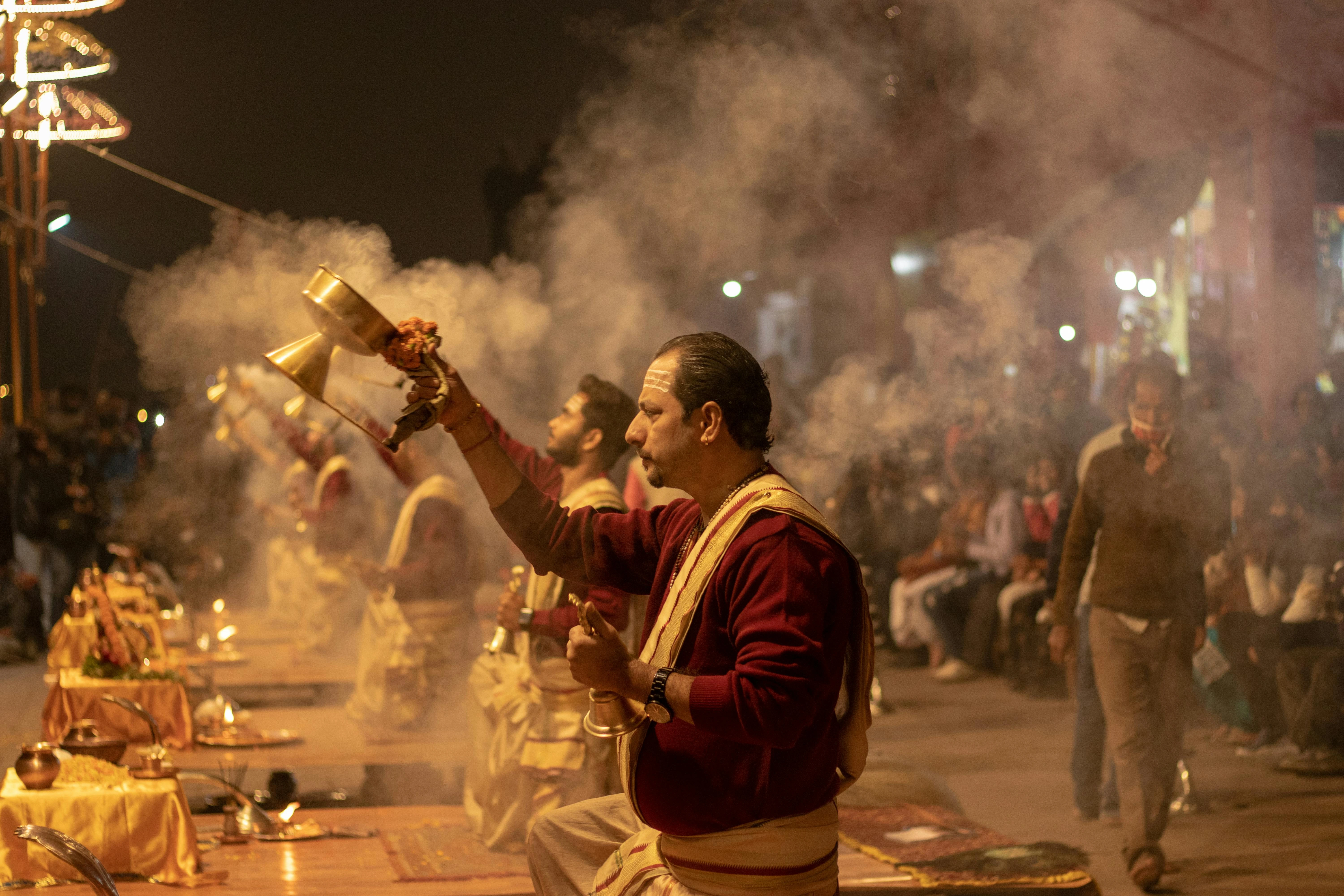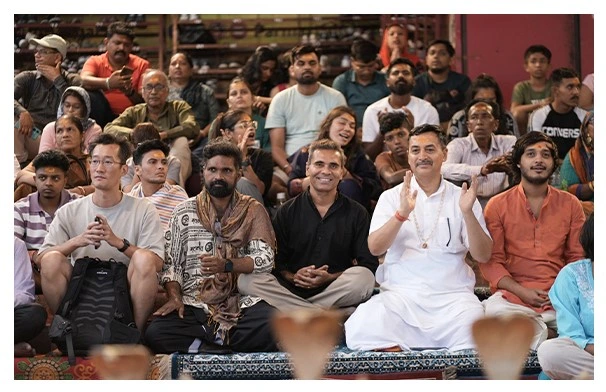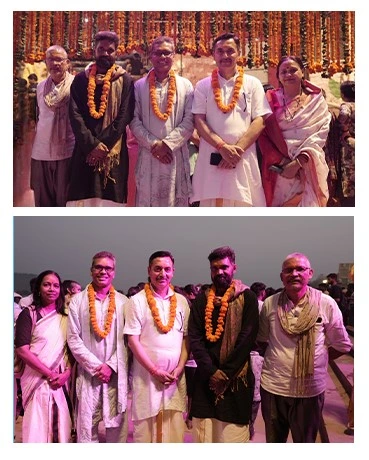Ganga Aarti
The Ganga - Source and Path

The Ganga - Significance.
For Indians, Ganga is not merely a river. It is revered as Mother Goddess, embodying purity, divinity, and salvation. A dip in the river is believed to purify the spirit and free it from reincarnation. Ganga, the holy river is believed to have descended to the earth from heaven, the fall mediated and softened by the holy tresses of Lord Shiva. The holy waters of the Ganga are believed to cleanse the bathers of their sins and free them from the arduous circle of death and rebirth or samsara. This eternal cycle is embodied in the majestic splendor of the Ganga Aarti which serves as a counterpoint – the juxtaposition of the divine’s everlasting presence with the transient nature of life.

Ganga Aarti - Important Venues
The Ganga Aarti- Ceremony
As dusk descends, the Ganga comes alive with the harmonious convergence of the Pancha Bhutas - air, water, earth, sky and fire. The air fills with anticipation and the collective eagerness of the pilgrims about to delve in the glory of this ethereal phenomenon. At the appointed hour, adorned in traditional saffron clothing the pundits arrive with big brass lamps, flowers and other sacred objects required for the ceremony. The priests enchant the onlookers with their choreographed movements as they perform the Aarti. Designs of the all-encompassing magical and spiritual word “AUM” are drawn in the air by the priests. The entire ghat is illuminated by a golden light as the lamps are raised to the sky casting an out of the world glow that reflects off the waters. The fragrance of incense and sandalwood permeates the air.
The Aarti is held daily at dusk and lasts for about 45 minutes. The idol of Goddess Ganga is carried in a palanquin and offerings of curd, ghee, honey etc is made to the Goddess to the accompaniment of the chanting of Ganga Lahiri, which is a song written by Pandit Jagannath, a Sanskrit scholar. The ghats are filled with the sound of sacred hymns and temple bells ringing. After this the pundits take an oath from everyone gathered around to refrain from polluting the river. The people respond by raising their hands.
The Aarti commences with the blowing of the conch shells and continue with the waving of incense sticks in elaborate patterns. This is followed by the encircling of large blazing lamps that light up the dark skies. The movement of the lamps is in sync with the chant of hymns and clang of cymbals. The heavy scent of sandal wood adds to the sublimity. The Aarti also concludes with the blowing of the conch. The air becomes audible with the sound of the chants, songs and bells, and the sound becomes visible. A deep feeling of oneness where borders between the tangible, the visual and audible collapse. The entire ritual commences and concludes with the blowing of conch shells.
An ideal time to witness this culturally rich heritage of Haridwar, Rishikesh and Varanasi is during the Ganga Mahotsav which usually coincides with the festival of Lights- or Diwali.
Significance of the Aarti
The Ganga Aarti has its roots in the ancient scriptures and rituals of Hinduism. This ceremony has been integral to the cultural fabric of the northern states for centuries, weaving together devotion, tradition, and mysticism. It is a testimony to the country’s long history of faith and devotion luring millions of people into its radiantly soothing embrace. The ceremony promotes and preserves traditional rituals, songs and music that would otherwise be lost to time. The pujaris or pundits who carry out the Aarti have undergone extensive training in these age-old rituals and traditions ensuring that they would be passed down the generations.
The Ganga Aarti is fundamentally a journey into the human soul and is an expression of gratitude to the Ganges and Mother Nature. It is a living tradition which embodies the ethereal, the splendor of nature and the depth of human connection. This ceremony celebrates the relationship between humans and earth and serves as a gentle reminder of their interdependence. The aarti serves as a bridge for the river to meet the human heart and the borders collapse to lead to a profound comprehension of life. The Ganga Aarti unites people from all walks of life in a common experience of awe and devotion, overcoming religious and cultural divides. It is more than just a ritual. It is an ode to life’s vivacity and splendor through an invocation to the divine. The five elements, the life cycle and the ever-present flux of human existence are all represented by the Ganga Aarti.
The ceremony of Ganga Aarti is a gesture of gratitude to the river Goddess, thanking her for nourishing life and purifying the souls of millions. This intense act of worship charges the air with spirituality and energises the soul and body of the conglomerate of saints, ascetics and spiritual explorers who throng the banks to witness this beautiful and divine tableau.
Here Agni, or fire God worships Jalam or the water god. It is fire doing large scale obeisance to water which symbolizes Ganga Maiya. Worshippers undergo the feeling of total reductionism experiencing a nothingness leading to the realization of the essence of life. Even when we become conscious of the elements which are at play during the Ganga Aarti, on a physical plane we see the predominance of the Fire offering its worship to the Water. It is the aura of the fire more than the fire itself that acquires a quality of the divine. Fire is the medium transmitting the energy exuded by the almighty.
Through the aarti, the transference of the energy becomes complete. Little wonder that people assemble at the ghats to witness the aarti time and again. It is a ceremony performed in extolled greeting and thanksgiving of the deities - the ringing of the bells, reminding devotees of God’s glorious presence.



